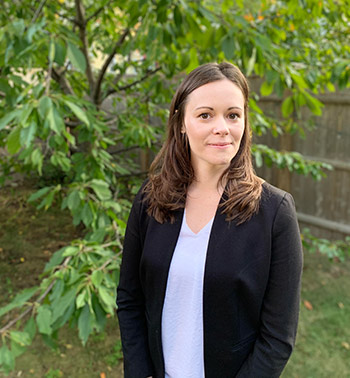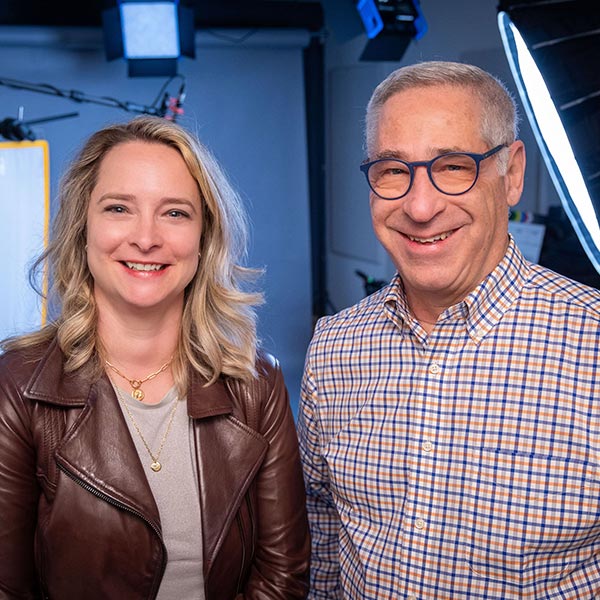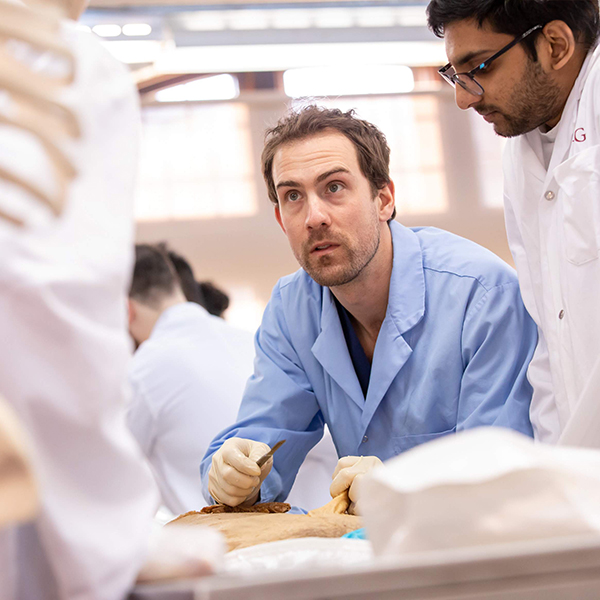When the news he had been waiting for arrived, Noubar Afeyan’s first thought was that it was probably bad.
“It was a Sunday morning and I was home with my wife,” says Afeyan, BEng’83, the co-founder and chairman of Moderna. An independent data and safety monitoring board (DSMB) was reviewing the results of the phase three clinical trials for Moderna’s COVID-19 vaccine. The DSMB was examining double-blinded data, so even Afeyan and his Moderna colleagues were unsure of the results. He was awaiting the verdict.
“I was expecting to hear something in the late afternoon, but the news came a bit earlier and I was taken by surprise. I grew up [believing] that bad news travels faster.”
But the news wasn’t bad. It was exactly the news that Afeyan was hoping to hear. It was the news that millions of people around the world were hoping to hear. Moderna’s vaccine worked. It had an efficacy rate of more than 94 per cent.
“We knew then that we would be moving to a new phase,” says Afeyan. “We would be making hundreds of millions of doses.” COVID-19 vaccines, produced by Moderna and other companies, would soon be playing an unprecedented role in the world.
“There has never been a biotech invention that has ever entered as many human beings,” in such a short span of time, says Afeyan. “Even something like Aspirin, I doubt, has been in billions of people all at the same time. This is a whole new experience for our industry. We’re seeing a moment where, hopefully, 95 per cent, if not 100 per cent, of the people on this planet will benefit from this new technology.”
Over the course of his career, Afeyan has become a specialist in creating innovative companies. In fact, he is the founder and CEO of Flagship Pioneering, a company that was created to create other companies – including Moderna. Flagship has developed and finetuned a formula for doing just that. And the goal is always to create a particular kind of company.
In a talk earlier this year that was co-hosted by the McGill Engine Centre and the McGill Dobson Centre for Entrepreneurship, Afeyan described the companies that he and his Flagship colleagues seek to nurture. He is interested in launching new companies that “allow us to leap to big breakthrough innovations, as opposed to incrementally advancing what’s [already] possible.”
The process, boiled down, works out something like this: an innovative idea, something outside the ordinary, is rigorously tested to see if it is feasible. According to the Flagship website, 80 to 100 of these ideas are carefully assessed each year. The ones with the most promise, the ones that look doable, eventually form the basis for a new company, and Flagship equips that company with everything it needs to have a real shot at success – a leadership team, a board of directors, and help with funding.
Afeyan describes these companies as having all the strengths of both an “insurgent” (a bold new approach or technology) and an “incumbent” (skilled leadership and ready-from-day-one resources). Flagship has been granted more than 2,500 patents worldwide and it has launched more than 100 companies. Thirty-three are currently in operation. One of them is Moderna.
Flagship lists all its companies on its site and each one has its own “What if…” question attached to it to describe the initial idea that propelled the company’s creation. For Moderna, the question was this: “What if we could instruct a patient’s own cells to produce proteins that could prevent, treat, or cure diseases?”
Moderna relies on messenger RNA (mRNA) to do this. Essentially, mRNA is a crucial middle manager in our bodies, carrying out instructions from our DNA and delivering them to the cells that make the proteins that affect all the things that take place inside our bodies. In the case of the mRNA vaccine that Moderna developed for COVID-19, cells are instructed to create proteins that will rally the immune system to protect us from getting sick if the coronavirus enters our bodies.
“I think that messenger RNA can be the underlying technology for dozens of new vaccines and drugs,” says Afeyan. “What was remarkable was that all the years we spent developing our platform kind of made it ready just as this pandemic hit.”
In a recent interview with MSNBC, Afeyan noted that Moderna was already collaborating with the National Institutes of Health in the U.S. on a vaccine for MERS, a related coronavirus, when the COVID-19 pandemic began. “That helped us get out of the gate very quickly,” Afeyan said.
Afeyan spent much of his youth in Montreal after his family left Lebanon in 1975 during the civil war there. His family has an uncomfortably long history with dangerous times. His father had initially arrived in Lebanon to escape communism in Bulgaria. His grandfather was a survivor of the Armenian genocide.
Afeyan studied chemical engineering at McGill. As an undergraduate, he had one of the easiest commutes in Montreal. He and his family lived in an apartment in the Cartier Building at the corner of Peel and Sherbrooke. “The [McLennan] Library was literally across the street. My apartment was closer to McGill than McGill’s own dorms were. I could crawl out of my bed and be in class in about four minutes.”
He played a lot of sports – broomball, flagball, football, basketball. “In engineering, these sports were major sources of competition and winning the [various championships] was a big deal between the different departments,” says Afeyan. “I edited the chemical engineering newsletter, too. Living so close to campus, I was quite engaged with everything that was taking place there.
“One of the things that I really appreciated about the McGill engineering school was that the faculty included a lot of practitioners and not just theoretical engineers. These were people who worked in the industry and I was very interested in the applied side of the field. One of my professors was Michael Avedesian. At the time, he was the head of R&D at Domtar.”
Afeyan took on engineering jobs in the summers as a student, including one at Dow, the multinational chemical giant.
“That showed me what real engineers did, but it also convinced me that I didn’t want to go into a field that was already 50 or 60 years old from a point of view of innovation,” says Afeyan. “That pushed me down the path of figuring out what was more cutting-edge at the time.” He settled on the still young field of biochemical engineering and applied to MIT for his graduate studies.
MIT was the only university he applied to.
“I look back at that now and I can’t fathom what I was thinking,” says Afeyan. “I didn’t apply anywhere else but MIT, which I didn’t realize was completely ridiculous on my part. The comedy of being an immigrant, and people don’t realize this, is that there are all these things you just don’t know.” He didn’t grow up with the same pop culture references as most of his peers. He hadn’t listened to the same songs or watched the same cartoons as a youngster. “I didn’t know any of Yogi Bear’s expressions and I didn’t know that MIT was hard to get into.”
Luckily for Afeyan, MIT accepted his application. He completed a doctorate there. While at MIT, he represented the school at a National Science Foundation meeting in Washington, D.C. He struck up a conversation with a stranger during lunch, not realizing until later that he was talking to Hewlett-Packard co-founder David Packard. Packard chatted about how his company was formed.
During his McGill talk in January, Afeyan described the impact this chance meeting had on him. “I had never really thought of the fact that mere mortals could start companies,” he said. “I spent another two hours asking him as many questions as I could come up with about how somebody does that.”
After graduating from MIT, Afeyan was determined to start a business of his own.
“The timing was interesting, because it was right after the market crash in 1987 when I started talking to investors. I saw these big industries going down and I knew it was going to be a difficult few years of recovery.” In spite of that – or, more accurately, because of that – Afeyan thought the time was right to secure backing for a new company.
“I believed it might be a good moment to start something new, because I thought [all these investors] would have a ton of time on their hands and they would be able to focus on what I was proposing. In a more active time, everyone would be pitching their ideas [at them].”
He launched PerSeptive Biosystems in 1987. It became a major player in the bio-instrumentation field with $100 million in annual revenues. The company was sold 10 years after its founding.
He then became senior vice-president and chief business officer of Applera, an international biotech company. While there, he played a key role in the creation of Celera Genomics.
Now that he knew how to build a successful company, Afeyan came up with a different challenge for his next chapter. He would build a company that built companies. Flagship Pioneering was officially founded in 2000.
“I thought [this] form of entrepreneurship, what I used to call parallel entrepreneurship, would be about as scary for me as a 37-year-old as starting a single company was when I was 24,” says Afeyan. “I really wanted to push myself to where failure was a real option. I just don’t think that if you stay in your comfort zone that you’re going to have the opportunity to have the same kind of impact.”
Afeyan suspects that mindset has a lot to do with his background as an immigrant.
“I think this whole notion of migrating, moving from one place to a hopefully better place, I do think this is an absolutely integral part of entrepreneurs and innovators because you wouldn’t start something new if you thought what existed was good enough.
“That willingness to risk unfamiliarity, that’s something people try to avoid,” says Afeyan. “To be willing to take that risk, well, if it was easy, everybody would be doing it. It’s not that easy to do, so it plays to our strengths.”
Even before the pandemic, Afeyan says he has been questioning the way society approaches the whole sphere of healthcare.
“We’ve become almost resigned to the fact that our health has to get really bad and then we will deploy all these expensive surgeries and treatments,” he says. “Medicine often focuses on providing solutions for really serious problems, instead of helping us to avoid those problems before they become so serious.
“We need to shift our investments upstream to prevention. We need to come up with approaches that can deter, defer [or] derail diseases, as opposed to trying to treat it once it’s there. That is what I’m focused on these days.”
It sounds like the staff at Flagship Pioneering will be keeping busy, putting more potentially disruptive ideas to the test, looking for the next Moderna.
From Macdonald to Moderna



